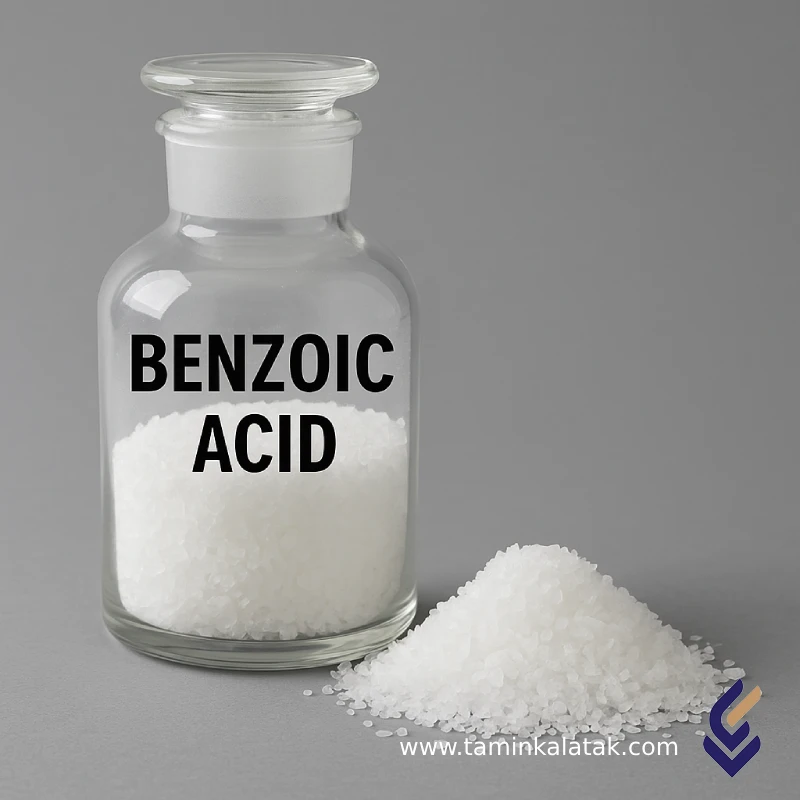Benzoic acid
Benzoic Acid is an aromatic organic compound with the chemical formula C₆H₅COOH, appearing as a white, crystalline, odorless solid. It occurs naturally in some fruits such as berries and is one of the simplest aromatic carboxylic acids. One of its most important characteristics is its ability to inhibit the growth of bacteria and fungi, making it widely used in the food and pharmaceutical industries.
Structure of Benzoic Acid
Benzoic acid consists of an aromatic ring (benzene) attached to a carboxylic acid group (–COOH). Its structural details are:
-
Chemical Formula: C₇H₆O₂ or C₆H₅COOH
-
Molecular Weight: 122.12 g/mol
-
Melting Point: 122 °C
-
Boiling Point: 249 °C
-
Solubility: Slightly soluble in water; soluble in alcohol, ether, and fats
Properties of Benzoic Acid
-
Physical State: White crystalline solid
-
Odor: Faint aromatic odor
-
Weak acid (pKa ≈ 4.2)
-
Oxidation-resistant
-
Natural antifungal and antibacterial agent
-
High stability under normal temperature and pressure
Applications of Benzoic Acid
✅ Food Industry: Used as a food preservative (E210) to prevent spoilage
✅ Pharmaceutical Industry: In the production of antifungal and anti-inflammatory drugs
✅ Cosmetics and Personal Care: Found in creams, lotions, and shampoos
✅ Chemical Industry: Used in the production of alkyd resins, plastics, and intermediates for organic synthesis
✅ Ester Production: To make perfumes and flavorings
✅ Cleaning Solutions: As a component in some industrial cleaning agents
Disadvantages of Benzoic Acid
❌ May cause skin and eye irritation at high doses
❌ Some individuals may have sensitivities to it
❌ Not recommended in large amounts for children
❌ Excessive consumption in food may raise health concerns
Advantages of Benzoic Acid
✅ Strong antimicrobial properties
✅ Affordable and widely available
✅ Extends shelf life of food and cosmetic products
✅ Good solubility in many solvents
✅ High stability and long-term storability
Applications
| Chemical name | Chemical formula | CAS number | Grade | Vapor pressure | Physical appearance | Density (at 20°C) | Melting point | Solubility in water |
|---|---|---|---|---|---|---|---|---|
| Benzoic acid | C₇H₆O₂ یا C₆H₅COOH | 65-85-0 | ACS، Food Grade، Pharmaceutical Grade، Laboratory Grade | < 1 mmHg at 20°C (approximately 0.0013 mmHg) | White or off-white crystalline solid with a faint aromatic odor. | 1.32 g/cm³ | 122 تا 123°C | 0.34 g/100 ml water at 25°C (slightly soluble in water) |







